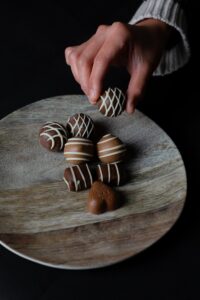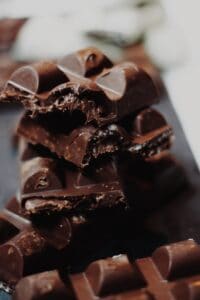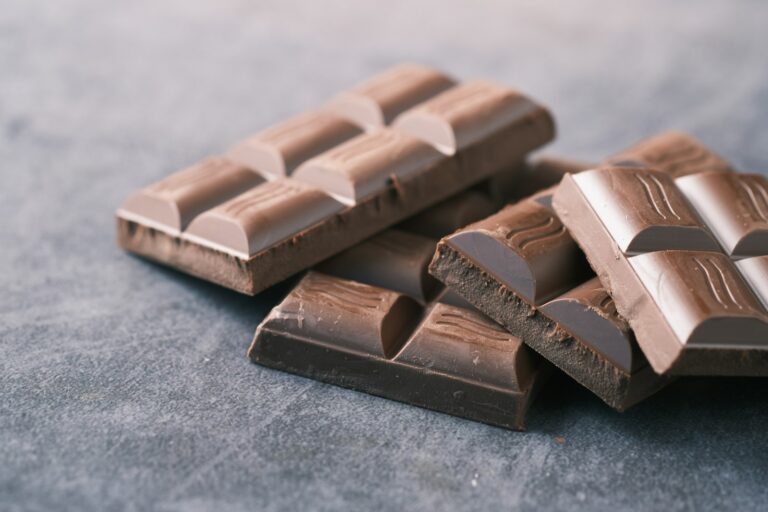In my journey through the world of culinary delights and their impact on our well-being, I’ve stumbled upon a fascinating topic that’s been stirring quite the buzz on social media: chocolate as an aphrodisiac. It’s not just any chocolate, but those specially infused with supplements claimed to boost sexual desire. The allure of such chocolates, promising not just pleasure but enhanced intimacy, has captured the imagination of many. But as someone who’s always keen to separate fact from fiction, I find myself asking, do these chocolates truly hold the key to unlocking desire, or is it all just sweet talk?
The concept of aphrodisiacs isn’t new. For centuries, various foods, including oysters and spicy dishes, have been celebrated for their supposed ability to kindle love’s flame. Chocolate, especially dark chocolate, has been part of this storied tradition, praised for its mood-lifting and health benefits. However, the scientific backing for these claims remains a topic of debate. As we dive deeper into the world of aphrodisiac chocolates, it’s crucial to approach the subject with a healthy dose of skepticism, mindful of the thin line between hope and hype. Let’s embark on this deliciously intriguing exploration together, shall we?
Exploring the Sensual Allure of Chocolate
History and Cultural Significance
Diving into the history and cultural significance of chocolate, it’s evident why this delightful treat has long been revered as an aphrodisiac. From its roots with the ancient Maya and Aztecs, where cacao was a luxury reserved for the elite, to its transformation into the chocolate we recognize today, this indulgence carries with it a rich tapestry of allure and sensuality. I’ve discovered that its journey across the globe is as captivating as the flavors it embodies. The Maya and Aztecs believed chocolate had divine properties, often using cacao beans in rituals related to fertility and marriage, illustrating an early link between chocolate and sexual well-being.

When chocolate made its voyage across the Atlantic to Europe, its status as a symbol of luxury and desire only grew. European nobility consumed chocolate as a statement of wealth and sophistication, often enhanced with exotic spices to further stimulate the senses. It wasn’t just the taste buds that were enticed by chocolate; its rarity and the sensory experience of consuming it contributed to its reputation as a potent aphrodisiac. Over time, scientists have identified certain chemicals in chocolate, such as phenylethylamine and serotonin, that could potentially mimic the feeling of being in love, thus reinforcing its association with romance.
The allure of chocolate doesn’t rest solely on its taste or the physiological effects it may have on the body; its cultural significance as a symbol of desire and temptation has perpetuated its status as the food of lovers. Whether in the form of dark, milk, or even white chocolate, this delectable treat signifies more than just a sweet craving—it’s a gesture imbued with intention and desire, a microcosm of love’s complexity and depth.
Why Chocolate Is Gifted in Romantic Contexts
Exploring why chocolate is often gifted in romantic contexts reveals a fascinating blend of psychological, cultural, and sensory factors. I’ve noticed that chocolate’s luxurious texture and rich flavors invoke a sense of indulgence and pleasure, making it the perfect medium through which to express affection and desire. The act of gifting chocolate, especially during meaningful occasions like Valentine’s Day, has become a deeply ingrained tradition that symbolizes caring and thoughtfulness.
One of the reasons chocolate makes such a popular gift for lovers lies in its chemical makeup. The presence of compounds like tryptophan, which is linked to serotonin production, and magnesium, which can help with relaxation, suggests that eating chocolate could contribute to a feeling of well-being and happiness. Though the direct impact of chocolate on sexual arousal and function is a topic of debate, its role in fostering a mood conducive to intimacy cannot be overlooked.
What Makes Chocolate as an Aphrodisiac?
Diving into the heart of why chocolate is often hailed as an aphrodisiac, I uncover the key elements that contribute to this alluring charm. From the luxurious taste that seduces our taste buds to the complex chemical makeup of chocolate, there’s a symphony of reasons why this decadent treat is linked to love and desire.
The Role of Phenylethylamine (PEA)
Phenylethylamine, or PEA, plays a pivotal role in chocolate’s reputation as an aphrodisiac. Often dubbed as the “love drug,” PEA is a chemical found in chocolate, especially rich in cacao beans, that stimulates the brain to release endorphins. These endorphins ignite feelings of pleasure and euphoria, mirroring the sensations one might experience when falling in love. Although the quantities of PEA in chocolate are relatively low, the psychological effects, combined with the luxurious experience of eating chocolate, can amplify its aphrodisiac qualities, boosting mood and possibly contributing to an increase in sexual desire.
The Importance of Tryptophan
Another key player is tryptophan, an essential amino acid present in both dark chocolate and milk chocolate. Tryptophan serves as a precursor to serotonin, a neurotransmitter that’s pivotal for promoting feelings of well-being and happiness. Elevated serotonin levels can lead to an enhanced mood and a reduction in stress, factors that are intimately connected with sexual function and libido. The soothing effect of serotonin not only makes us feel good but could also pave the way for increased sexual arousal by facilitating a relaxed state of mind.
The Contribution of Zinc and Quercetin
Chocolate, particularly dark chocolate, is a good source of zinc, a mineral essential for fertility and reproductive health. Zinc plays a critical role in the production of testosterone, a hormone directly linked to sexual desire in both men and women. Increased testosterone levels can enhance libido and sex drive, underscoring chocolate’s potential as an aphrodisiac.
Quercetin, a flavonoid found in chocolate, contributes to its aphrodisiac properties by improving blood flow. Better blood circulation is beneficial for sexual arousal and function, as it supports healthier blood pressure levels and vascular health. Although research on quercetin’s direct effects on sexual health is limited, its role in enhancing blood flow suggests a connection to improved sexual pleasure.
Through exploring these components, it’s clear why chocolate has maintained its status as an iconic aphrodisiac through the ages. From enhancing mood to supporting vital physiological functions related to sexual health, chocolate’s appeal transcends its taste, tapping into a deep-rooted connection between what we eat and how we feel. Whether it’s the temptation of a dark chocolate truffle or the allure of a cacao-rich bite, chocolate contains a multitude of factors that make it much more than just a food—it’s a catalyst for pleasure, desire, and maybe even love.
Analyzing the Science Behind the Claim
Diving into the science behind chocolate’s reputation as an aphrodisiac, I explore whether this beloved food truly influences sexual desire and pleasure. The allure of chocolate, often associated with love and seduction, has long intrigued both the curious and the hopeful. But does science substantiate this claim, or is it all just sweet speculation? Let’s peel back the layers.
What Studies Show About Chocolate and Sex Drive
Researchers have delved into the components of chocolate, particularly dark chocolate, to understand its potential aphrodisiac qualities. One key finding centers on Phenylethylamine (PEA), a compound found in chocolate, which the human brain also produces during feelings of love and sexual pleasure. However, the rapid breakdown of PEA in the digestive system challenges the idea that eating chocolate can directly increase sexual desire or improve sexual function.
Further examination reveals that compounds such as theobromine and tryptophan in chocolate might boost mood and heart rate, elements associated with sexual arousal. Still, the direct impact on sex drive remains inconclusive. Studies attempting to link chocolate consumption to enhanced libido or sexual performance have not provided definitive proof, often citing the placebo effect as a possible explanation for perceived improvements.
Moreover, the increase in blood flow, a factor critical to sexual arousal, due to chocolate’s flavonoids, suggests a potential physiological effect. Yet, the extent to which this may influence sexual desire or pleasure is still under investigation, with existing research offering limited evidence.
Psychological Perspectives on Sex and Chocolate
From a psychological standpoint, the association between chocolate and sexual desire might be more about perception and context. The act of eating chocolate, especially as a gift from a person of interest, can trigger feelings of being desired or special, effectively setting the stage for arousal through psychological means rather than direct chemical effects.
The luxurious taste and mouthfeel of chocolate engage the senses in a way that can mimic or enhance emotional experiences of pleasure and intimacy. Alongside, cultural narratives and media depiction of chocolate as an aphrodisiac reinforce the psychological links between chocolate consumption and sexual allure, making the idea of chocolate as an enhancer of sexual pleasure alluring in itself.
While the scientific evidence directly correlating chocolate with increased sexual desire and pleasure is tenuous, the psychological and cultural dimensions offer a richer understanding of why chocolate enjoys its status as an aphrodisiac. The complex interplay of chemicals, emotions, and societal norms surrounding chocolate makes it a fascinating subject for further exploration, even as the search for concrete evidence continues.
Types of Chocolate with Aphrodisiacal Properties
The Mystique of Dark Chocolate
When I delve into the alluring charm of dark chocolate, I find its renown as an aphrodisiac is well-deserved. Dark chocolate stands out for its high levels of cocoa, which is the magical ingredient that makes chocolate an aphrodisiac. This type of chocolate contains phenylethylamine and serotonin, two chemicals that mimic the feelings of love and pleasure in the brain. My exploration reveals that consuming dark chocolate can enhance moods and generate a sense of euphoria similar to the physiological effects of falling in love.

In addition to mood enhancement, dark chocolate’s contribution to sexual health and arousal cannot be understated. Its ability to improve blood flow and blood pressure is a beneficial factor. These circulatory improvements can potentially lead to increased sexual desire and pleasure, making dark chocolate a staple for anyone looking to spice up their sex life. The presence of magnesium and antioxidants in dark chocolate further supports overall well-being, which is essential for a healthy libido.
Exploring Milk and White Chocolate
Moving on to milk chocolate, it becomes clear that though it may share some aphrodisiac qualities with dark chocolate, it’s not quite as potent. The main difference lies in the cocoa content; milk chocolate has added milk and sugar, which dilutes its concentration of cocoa and, by extension, reduces the intensity of its effects on sexual desire and pleasure. Despite this, milk chocolate’s creamy taste and satisfying texture can still evoke feelings of happiness and contentment, contributing to its overall feel-good factor.
Discover a collection of chocolate-themed merchandise that extends beyond fondue, appealing to chocolate enthusiasts.
White chocolate, on the other hand, presents a different case. Technically, white chocolate does not contain cocoa solids, only cocoa butter, making its aphrodisiacal properties less direct. However, its rich, creamy flavor can stimulate pleasure in the taste buds, offering a psychological effect that might momentarily boost mood and feelings of well-being. While its impact on sexual arousal and libido might not be as pronounced as dark chocolate’s, white chocolate’s indulgent nature makes it a delightful treat for many.
While all types of chocolate carry certain elements of temptation and seduction, dark chocolate unequivocally holds the title for the most potent aphrodisiac qualities. Its high cocoa content and rich nutritional profile offer tangible benefits for sexual health and pleasure. Milk and white chocolates, with their sweeter taste and lower cocoa levels, still play a role in the intricate dance of desire, albeit with a lighter touch.
Ways to Enhance the Aphrodisiacal Experience with Chocolate
Exploring the rich tapestry of chocolate as an aphrodisiac, I’ve discovered that its allure extends beyond mere taste. Delving into this decadent world, let me guide you through enhancing the aphrodisiacal journey with chocolate, ensuring every bite is as tantalizing to the senses as it is to the heart.
Sensory Exploration and Chocolate Tasting
Embarking on a sensory exploration with chocolate begins with selecting high-quality bars that boast a high cocoa content. Dark chocolate, known for its profound aphrodisiac qualities, serves as the perfect starting point. The ritual of chocolate tasting itself can be an intimate experience. I recommend letting the chocolate melt slowly in your mouth, savoring each note and nuance. This slow, mindful consumption allows for the release of phenylethylamine and serotonin, chemicals that mimic feelings of love and pleasure, thereby elevating the sensory experience. By focusing on the texture, aroma, and flavor profiles, you engage more than just your taste buds; you create an ambiance of anticipation and allure that can heighten sexual desire and intimacy.
To further this exploration, adding sensory variations such as lightly chilled or gently warmed pieces of chocolate can intrigue the palate and add an element of surprise. Engaging other senses with blindfolding your partner during the tasting can also amplify the overall sensory delight, turning the act of eating chocolate into a game of seduction and discovery.
For more insights into the history and variety of chocolate flavors, check out our article on unique flavored chocolate bars.
Chocolate Pairings for Romantic Occasions
Pairing chocolate with complementary foods and drinks can elevate the aphrodisiacal experience to new heights. A classic pairing is chocolate and wine—particularly red wine, which contains resveratrol, an antioxidant that can improve blood flow and stimulate arousal. The complexity of flavors in both chocolate and wine, when matched well, can enhance the overall tasting experience, making each bite and sip an exploration of depth and delight.
Moreover, incorporating spices into your chocolate pairings can introduce an extra layer of aphrodisiacal qualities. Spices like cinnamon, ginger, and chili aren’t just flavor enhancers; they’re also known to increase blood flow and warm the body, potentially increasing sexual excitement. Try serving spiced chocolate truffles or a homemade dark chocolate bark sprinkled with a pinch of chili powder and sea salt for an unexpected yet alluring treat.
Additionally, consider the setting when indulging in aphrodisiac chocolate pairings. Creating a romantic atmosphere with soft lighting, elegant serving plates, and perhaps a bouquet of flowers or a few scented candles can magnify the allure of the moment, making the act of sharing chocolate with your partner an intimate celebration of your connection.
Diving into the world of chocolate as an aphrodisiac has been a fascinating journey. I’ve uncovered not just the science but also the art behind using chocolate to spark desire. It’s clear that while the chemical makeup of chocolate plays a role, the true magic lies in how we experience it. By engaging our senses, creating the right atmosphere, and pairing chocolate with the perfect complements, we can transform a simple treat into a powerful tool for intimacy.
So next time you’re looking to add a spark to your romantic life, remember that chocolate, with its rich history and sensual qualities, might just be the key. Let’s embrace the sensual pleasure of chocolate and make every bite an adventure in love and desire.
For a deeper look into the differences between artisanal and mass-produced chocolates, visit our article on artisanal vs. mass-produced chocolate.
For more about the historical significance of chocolate, explore our article on chocolate in ancient civilizations.
Frequently Asked Questions
Did Europeans consider chocolate a powerful aphrodisiac?
Yes, after the Spanish conquest, chocolate along with its myths became popular across Europe. It was particularly embraced by the elite in countries like Spain, Italy, France, and Austria, where it turned into a tool for seduction.
Is coffee an aphrodisiac?
Indeed, both chocolate and coffee are recognized as aphrodisiac foods, thanks to their stimulating compounds that encourage the release of endorphins, enhancing the feeling of pleasure. A combination of chocolate fondue and espresso makes a perfect end to a romantic meal.
How do you use chocolate for seduction?
Using chocolate for seduction can involve playful and sensual activities, such as transferring a piece of melted chocolate between mouths with a kiss or licking melted chocolate off each other’s fingers, enhancing intimacy.
What is the best aphrodisiac for a woman?
Some of the best natural aphrodisiacs for women include Maca, Tribulus terrestris, Ginkgo biloba, Red ginseng, Fenugreek, Pistachio nuts, and Saffron, each known for their health benefits and potential to increase sexual desire.
What is the best natural aphrodisiac?
The best natural aphrodisiacs often come in the form of supplements containing herbs like Tribulus terrestris, tongkat ali, ashwagandha, rhodiola, catuaba bark, yohimbe, maca, or eleuthero extract, known to potentially boost sex drive.
